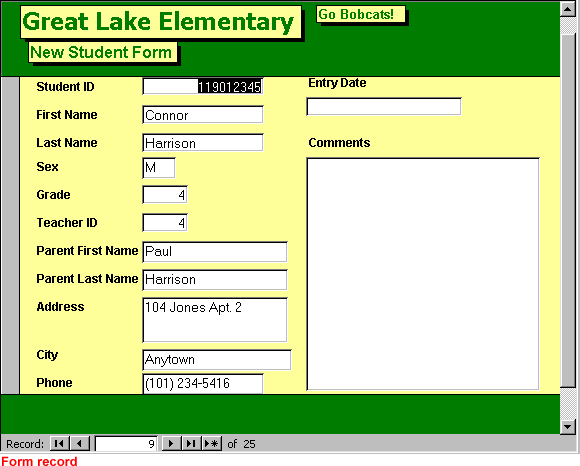Navigating Data Deletion: A Comprehensive Guide to Deleting Form Records in Access 2000

In the expansive realm of database management, the ability to delete form records plays a pivotal role in maintaining data accuracy, cleanliness, and relevance. Microsoft Access 2000, a robust relational database management system (RDBMS), provides users with powerful tools and features for managing form records with precision and efficiency. In this extensive guide, we embark on a comprehensive exploration of deleting form records in Access 2000, unraveling various methods, considerations, and best practices to empower users in their data deletion endeavors.
Understanding Form Records Deletion
Before diving into the intricacies of deleting form records in Access 2000, it’s essential to comprehend the fundamental concept of form records within the database ecosystem. In Access 2000, a form record represents a single instance or entry of data within a form interface. Each record typically corresponds to a row in a table and encompasses fields representing specific attributes or properties of the data being stored. Forms provide users with a structured and user-friendly interface for entering, viewing, and editing data, facilitating seamless data management workflows.
Methods of Deleting Form Records
Access 2000 offers users a variety of methods for deleting form records, catering to diverse preferences and workflow requirements:
- Form Controls Deletion: The primary method of deleting form records in Access 2000 involves interacting with form controls directly within the form interface. Users can navigate to the desired record within the form and initiate the deletion process by selecting the record or specific fields associated with the record. Access 2000 seamlessly updates the underlying data upon confirming the deletion, ensuring real-time synchronization between the form and the underlying table.
- Subform Deletion: Subforms allow users to display related data from multiple tables within a single form interface, enabling efficient deletion of interconnected records. Users can navigate to the subform within the main form and delete related records directly within the subform interface. Subforms provide users with a comprehensive view of interconnected data and streamline the process of deleting form records with complex relationships.
- Delete Queries: Access 2000 facilitates form record deletion through the use of delete queries, enabling users to remove multiple records simultaneously based on specified criteria. Users can create delete queries to target specific records within the underlying table and apply deletion criteria as needed. Delete queries provide users with a powerful toolset for bulk deletion of form records, enhancing productivity and efficiency.
- Visual Basic for Applications (VBA): Advanced users and developers can leverage VBA programming in Access 2000 to create custom form record deletion routines and automation scripts. VBA enables users to implement complex logic, handle dynamic deletion scenarios, and integrate with external systems or processes. By harnessing the power of VBA, users can customize and extend Access 2000’s functionality for specific form record deletion requirements.
Best Practices for Deleting Form Records
While deleting form records in Access 2000 is relatively straightforward, adhering to best practices can optimize efficiency, accuracy, and data integrity:
- Data Backup: Before initiating form record deletion operations, it’s advisable to create backups of the database to safeguard against unintended data loss or corruption. Access 2000 provides built-in backup and recovery mechanisms to mitigate the impact of deletion errors or unforeseen contingencies.
- Confirmation Prompts: Incorporating confirmation prompts or dialogs in deletion processes can help prevent accidental data loss and provide users with an opportunity to confirm their intentions. Access 2000 allows users to implement custom confirmation messages or prompts using macros or VBA code.
- Concurrency Control: Managing concurrent access to form records is crucial for preventing data conflicts and ensuring data integrity. Access 2000 offers concurrency control mechanisms such as record locking and optimistic concurrency, allowing users to control access to form records and prevent simultaneous deletions by multiple users.
- Error Handling: Implementing robust error handling mechanisms helps mitigate the risk of deletion errors and ensures smooth form record deletion processes. Access 2000 allows users to create custom error handling routines using VBA code, enabling them to handle runtime errors, display informative error messages, and gracefully recover from unexpected situations.
Conclusion
In conclusion, mastering the art of deleting form records in Access 2000 is essential for proficient database management and data manipulation. By leveraging the diverse methods, considerations, and best practices outlined in this guide, users can streamline the process of deleting form records, uphold data integrity and accuracy, and unlock the full potential of Access 2000 for efficient data management. Whether you’re a novice user or an experienced database administrator, proficiency in deleting form records empowers you to navigate the complexities of database management with confidence and precision.




